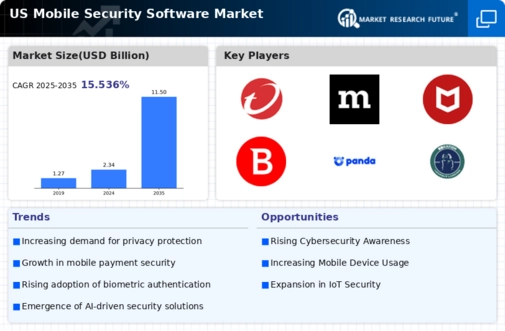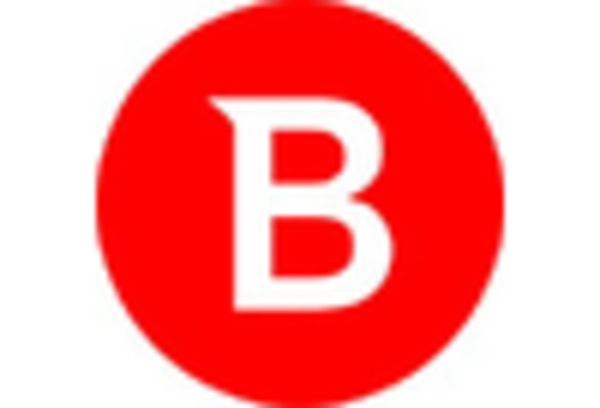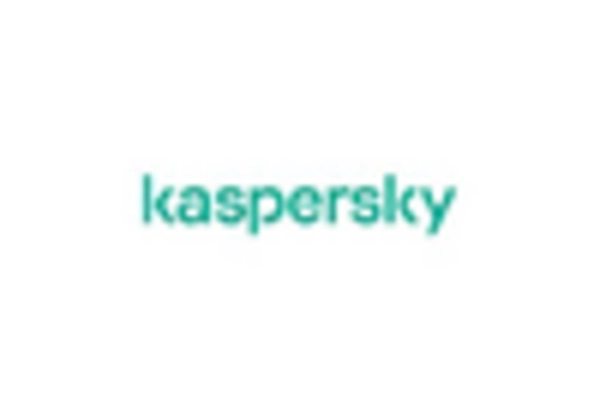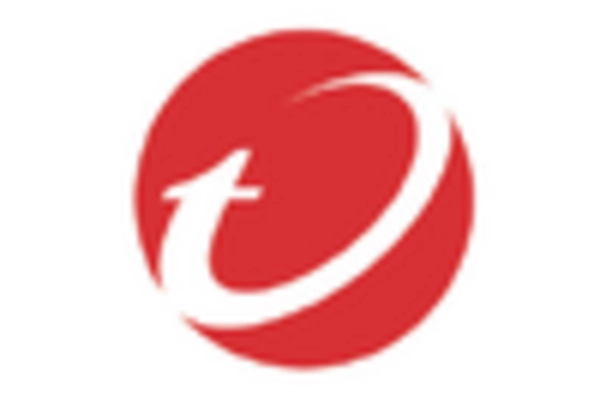The mobile security-software market is currently characterized by intense competition and rapid innovation, driven by increasing cybersecurity threats and the growing reliance on mobile devices. Key players such as McAfee (US), NortonLifeLock (US), and Kaspersky (RU) are strategically positioned to leverage their technological expertise and brand recognition. McAfee (US) focuses on enhancing its AI-driven security solutions, while NortonLifeLock (US) emphasizes user-friendly interfaces and comprehensive protection plans. Kaspersky (RU), on the other hand, is known for its robust threat intelligence capabilities, which it integrates into its mobile security offerings. Collectively, these strategies contribute to a dynamic competitive environment, where innovation and customer-centric approaches are paramount.
In terms of business tactics, companies are increasingly localizing their operations to better serve regional markets and optimize supply chains. The competitive structure of the market appears moderately fragmented, with several players vying for market share. This fragmentation allows for diverse offerings, yet the influence of major players remains significant, as they set benchmarks for quality and innovation that smaller firms often strive to meet.
In October 2025, NortonLifeLock (US) announced a partnership with a leading cloud service provider to enhance its mobile security solutions. This collaboration aims to integrate advanced cloud-based threat detection capabilities, thereby improving the overall security posture for users. The strategic importance of this partnership lies in its potential to provide users with real-time protection against emerging threats, thereby reinforcing NortonLifeLock's position as a leader in the mobile security domain.
In September 2025, McAfee (US) launched a new suite of mobile security applications designed specifically for small businesses. This initiative reflects a growing recognition of the unique security challenges faced by smaller enterprises. By tailoring solutions to this segment, McAfee (US) not only expands its customer base but also positions itself as a trusted partner for businesses seeking to enhance their cybersecurity measures. This move is likely to foster customer loyalty and drive revenue growth in a competitive landscape.
In August 2025, Kaspersky (RU) unveiled a new AI-driven feature within its mobile security software that predicts potential vulnerabilities based on user behavior. This innovative approach not only enhances user experience but also demonstrates Kaspersky's commitment to staying ahead of the curve in cybersecurity technology. The strategic significance of this development lies in its ability to proactively address security concerns, thereby differentiating Kaspersky (RU) from competitors who may still rely on reactive measures.
As of November 2025, the mobile security-software market is increasingly defined by trends such as digitalization, AI integration, and sustainability. Strategic alliances are becoming more prevalent, as companies recognize the need to collaborate in order to enhance their technological capabilities and market reach. Looking ahead, competitive differentiation is likely to evolve, with a shift from price-based competition to a focus on innovation, technology, and supply chain reliability. This transition underscores the importance of developing cutting-edge solutions that not only meet customer needs but also anticipate future challenges in the cybersecurity landscape.

















Leave a Comment